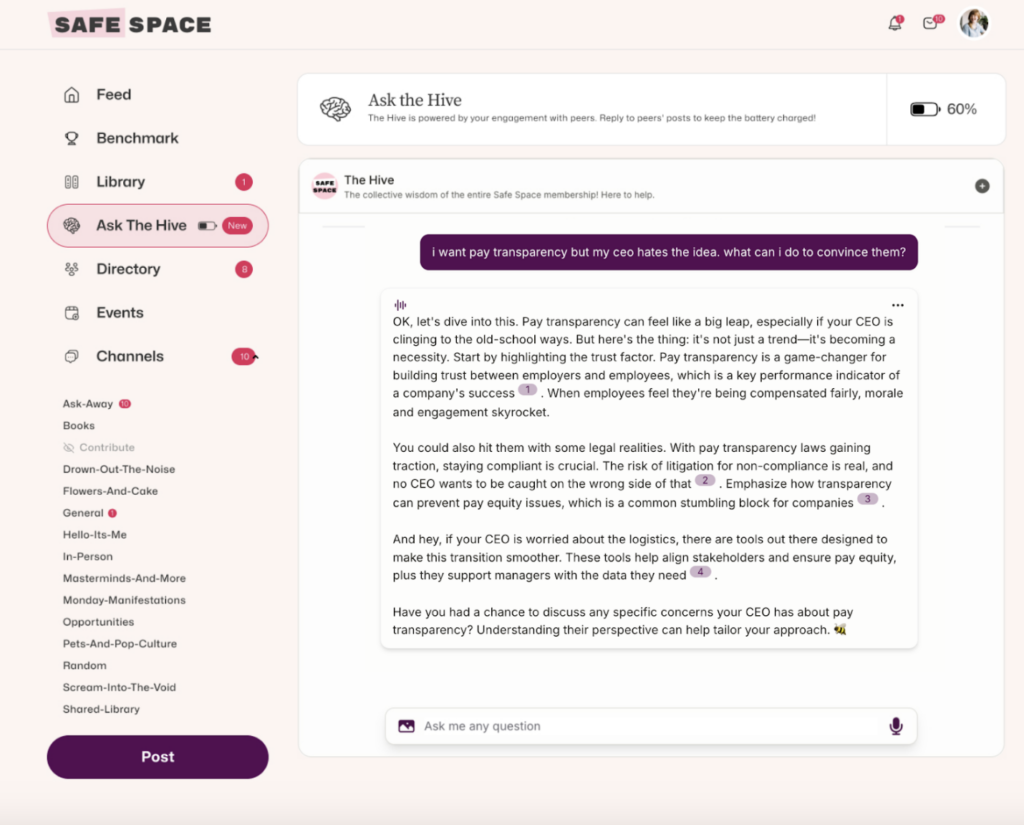Over the last few weeks I’ve been diving into different aspects of the hybrid world and how to tackle the challenges we’re facing.
To recap: some companies are demanding a return to the office because hybrid work can be harder, puts more power into the hands of employees and makes expensive offices less useful.
Despite the benefits we know about hybrid work:
- Increased productivity
- Increased engagement
- Increased job satisfaction
To make hybrid work successful for your employees you need to consider two major themes:
- How are you setting expectations
- How are you supporting employees
I’ve compiled a list of tips of best practices to support the hybrid world. When in doubt, reference this newsletter for inspiration.
Tip #1: Document your hybrid work policies
This is incredibly important as you onboard more employees to your org!
The goal of the policy should be to answer: What are your standard operating procedures as an organization embracing hybrid work?
Here are a few questions you should address in the policy:
- Why is your company committed to being hybrid?
- What are you expecting from employees? (Core working hours, away status, OOO on public calendars, etc)
- When, if ever, do employees need to be in the office?
Bonus points: consider doing an entire section on how you communicate as a company.
For instance:
- What requires a meeting?
- What goes into email VS Slack?
- Who are key stakeholders for decision making?
- What to do if some folks are in-person vs remote?
This document will set the expectations accordingly with your employees.
Tip #2: Foster connection
The hybrid world is LONELY, especially for fully remote employees!
So one part of successfully supporting your employees in the hybrid world?
Help foster connection.
Not just connection to their manager or the company or the vision but connection to each other!
To build connection In onboarding:
JOIN 150K+ HR LEADERS
Get insights, learnings, and advice on how to build companies and cultures that people actually love.
No spam. Unsubscribe any time.
- Incorporate buddies and/or meet & greets into onboarding
- Introduce all new hires to the different communities at the company
- Make cross-functional introductions so new hires aren’t siloed to their teams
To build connection throughout an employee’s time:
- Foster shared activities like book clubs.
- Host inclusive events. Don’t center events around drinking and after hours fun think morning breakfast events or midday ice cream breaks!
- Create open dialogue like a monthly coffee with the CEO or other leaders
- Normalize guilt free breaks! Create ways for your employees to take a break and not feel bad about it. You can do that by putting breaks on your company calendar or trying to end meetings at the 25 min or 45 min mark.
Employees that feel more connected to each other will feel more supported in the workplace!
Tip #3: Support your managers.

Managers are not okay. They need your help in the hybrid world!!
Managing is already difficult but now add on managing in a world where some of your employees are in-person, others are hybrid and some are fully remote and a whole new set of challenges is introduced.
Managers need your support now more than ever.
What does that look like?
- Asking managers what they are struggling with
- Providing ample internal AND external resources (like coaches!)
- Customizing your training to what your managers need
Training every manager needs regardless of how many years they’ve been managing:
- How to communicate with your team in the hybrid world
- How to set expectations
- How to deliver AND receive feedback
Remember, managers have the biggest impact on employees and their engagement.
Tip #4: Take care of your HR Team
Hi, it’s me. Your friend who will always remind you to take care of yourself.
HR teams are the beating heart of some organizations but this job is pretty thankless most days.
The impact of our job is most often felt rather than seen.
But I see you.
The hybrid world has introduced more challenges and usually those challenges are handed to the HR team to solve.
And that can be overwhelming.
But you can handle it!
For every problem that comes my way I ask myself:
- Has this come up before?
- What group is this impacting? (employees, managers, execs or everyone)
- What is the importance? (Tip: the more employees it impacts the more important it becomes.)
- What is the root cause of this problem? (communication, decision making, lack of relationship building, etc)
- What can I change to solve this problem? (Train managers, give feedback to execs, build new programs, or address it with employees)
When I’m level 10 frustrated I usually talk through these questions to calm myself down and start to strategize about what I need to tackle first.


